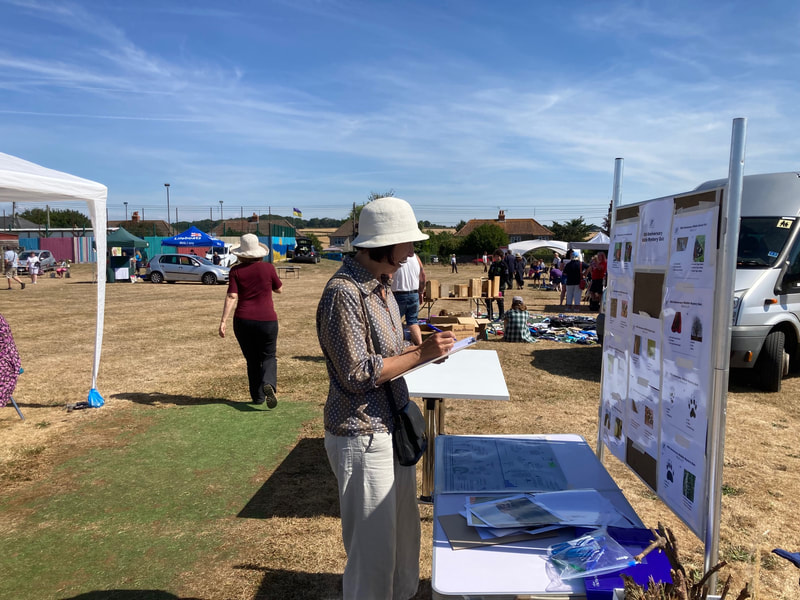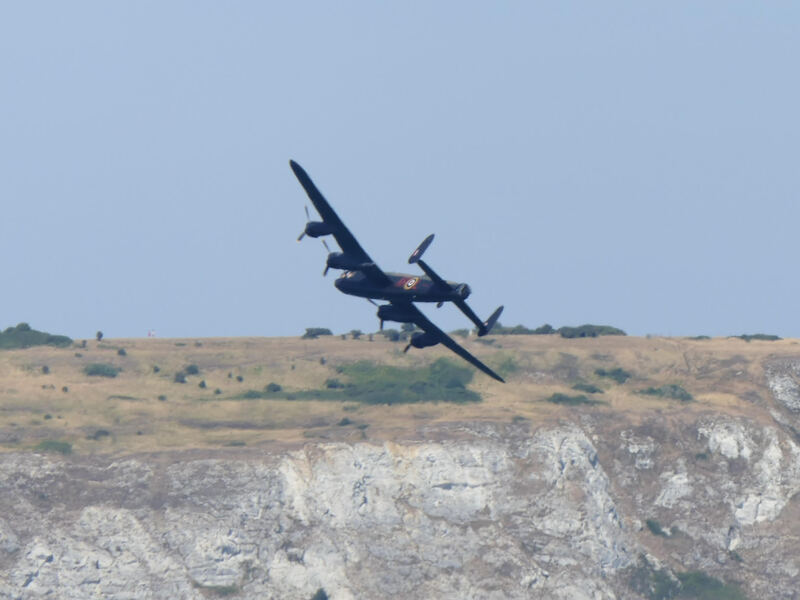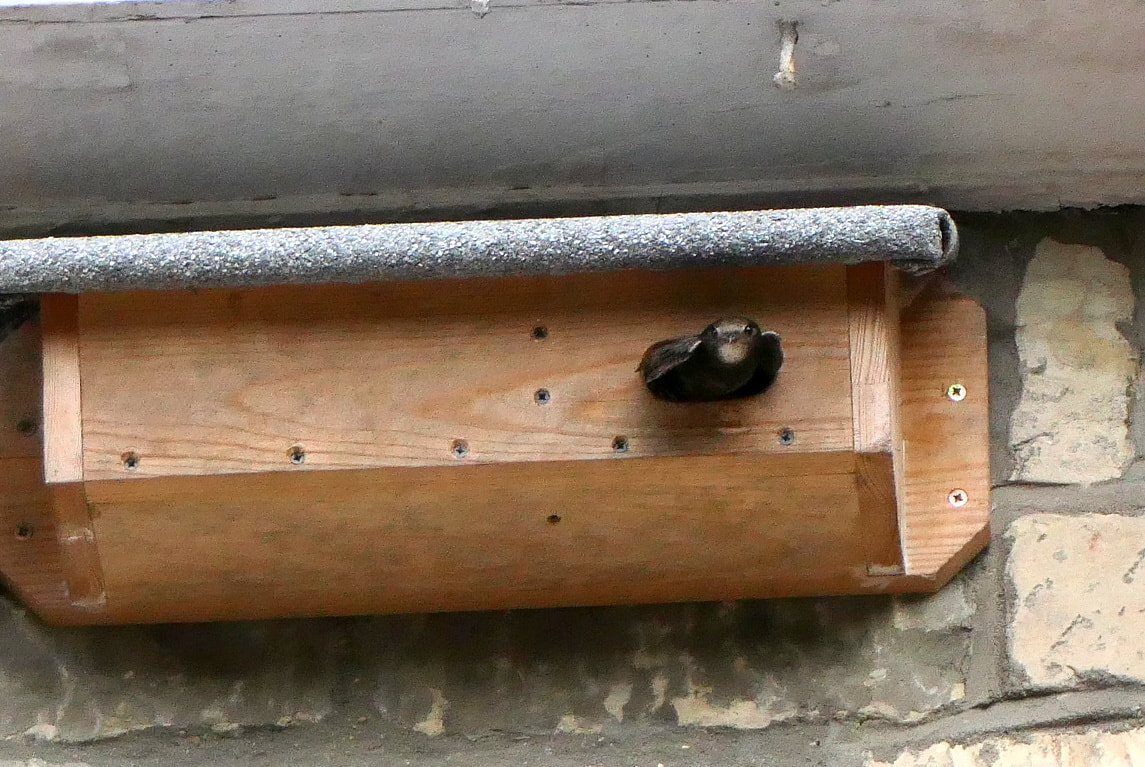|
Elizabeth drew our attention to the Defra advice, which she checked after finding a dead sparrow under her bird feeder. It's always hard to know how a bird has died and it's sensible, with avian influenza still around, that you know what to do.
Remember that you shouldn't touch a dead wild bird from your garden with bare hands. Please follow the advice here about how to dispose of one in your black bin. Please also see an excerpt from the gov.uk website below: Avian influenza (bird flu) is a notifiable animal disease. If you suspect any type of avian influenza in poultry or captive birds you must report it immediately by calling the Defra Rural Services Helpline on 03000 200 301. In Wales, contact 0300 303 8268. In Scotland, contact your local Field Services Office. Failure to do so is an offence. Reporting dead wild birds You should call the Defra helpline (03459 33 55 77) if you find:
Andrew Graham and Peter Shallcross will lead our final excursion of the summer, an outing to the Bulford Ranges Training Area on Salisbury Plain.
Members of the public are permitted to use Rights of Way that cross the training area when firing is not in progress and the plan is to walk along these established footpaths through this gently undulating landscape of downland and mixed woodlands. As the area lacks the field boundaries and enclosures that exist across most of the rest of the countryside, it looks and feels quite different from what we are used to, and remote. It is hard to forecast what effect the recent drought will have had on what there will be to see, but we are hoping for late summer downland butterflies and birds. With migration starting, one never knows what birds might turn up. Though we will be following well established paths and tracks, the parched, unforgiving ground means stout shoes or boots will be advisable. We will probably walk 3 to 4 miles; please bring refreshments and any snacks you may need, though the plan is to return to Tisbury by late lunchtime. As there is only limited parking at the start point, we ask everyone wanting to join the outing to meet Andrew and Peter at the Nadder Centre car park on Weaveland Road, Tisbury at 09:30. If you are setting off from a different location, please car share. The meeting place is at What3words: starfish.bleat.idea off the road between Bulford and Tidworth. At this location for 10:30 am. https://what3words.com/starfish.bleat.idea Members - please reply to the Treasurer's email sent on 28th August so that we know how many people to expect. Non-members (Guests) can join us for £2 per adult. Any Guests wishing to join this field trip must please contact us in advance. Can anyone help with the identification of this splendid fungus photographed by Jenny Farrer near Withyslade Farm ?
 We have an update to our Talks listing with Dr. Ed Treasure of Wessex Archaeology, Salisbury sharing his specialist work in the analysis of environmental evidence. Rewilding is a form of ecosystem management that has arisen out of our need to conserve biodiversity and work towards a more sustainable future. It refers to the repair or restoration of ecosystem services through the introduction, or rather re-introduction, of selected species and allowing nature to take its course. Rewilding is not without controversy – how do we define appropriate restoration baselines? What species should we conserve, which should we remove and which should we reintroduce? What timescale are we working with and how big should our projects be? How do we establish appropriate management strategies? How effective can rewilding be in human dominated landscapes that have been shaped by millennia of farming? This talk will show how archaeological and palaeoecological datasets can be used to inform rewilding processes and conservation management. Archaeologists, and researchers in related areas, can provide unique long-term perspectives on changes to the environment, and crucially provide information on factors which have shaped present-day biodiversity patterns – we can place conservation management practices within a wider historical and ecological framework, by understanding the relationship between past vegetation changes and human impacts on past environments. If you haven't already signed up to the talk at the Victoria Hall, Tisbury and want to come, please either reply to the Treasurer's email sent out on 28th August or let us know via the Contact form. We can also send out Zoom links for those who prefer to stay at home. Guests welcome for £2 per ticket. Thanks to everyone who popped by our stall last Saturday including our lovely volunteers, Lizzy and Janet, who helped man the stall. And well done to those who tried their hand with the Wildlife Quiz. The best score was 18 out of 20. No prizes but you know who you are! Young Nature Watch provided some bug hotels from their recent group activity which we gave away for small donations. We hope to see some new members at the next Young Nature Watch activity which is a bug hunt on Saturday 13th August. Please sign up to their mailing list to keep in touch. We have one more field trip for the season, on Saturday 3rd September, to Salisbury Plain where we will be taken round by a local farmer and shown the wildlife which is thriving in this unique conservation area.
If you've not yet done so, we encourage you to sign up to the mailing list for website news from this blog (see the small panel to the right of this post). You will receive prompts about what the Society is up to, plus members' photos and anecdotes, so do get involved and send us your items of interest. 16 members gathered on a predictably hot day at The Learning Centre at Durlston Country Park near Swanage. Dorset Council ranger Paul Jones gave us an introductory talk about the different habitats and the wildlife that we were likely to see. Had we visited earlier (say early June), we could have seen, heard and smelt the colony of guillemots nesting on the cliffs and seen the numerous different species of orchids flowering in the meadows that Durlston is well known for.
However, there was still plenty to see. Paul led us to an old quarry where, on hands and knees, he showed us the rare bastard toadflax (stars-in-grass is his more preferable name for it). He led us to meadows where we quickly saw brown argus, common and holly blues, meadow browns and a single grayling butterfly and, later on, a clouded yellow. From the cliffs we spied a flight of cormorants and a few lucky members saw peregrine falcons and a white-tailed eagle (They have been re-introduced on the Isle of Wight). After a fascinating 1.5 hour guided walk we bade farewell to Paul and most of us made our way to the cafe in the castle where, to top things off, we were treated to fly-by from a Lancaster bomber off Old Harry’s rocks as part of the Swanage Festival. by Peter Shallcross One feature of midsummer are the bright pink flowers of the willowherbs. More than ten species of this family – the Epilobiums – are found in this country and at least three will be commonly found hereabouts. All have spear-shaped leaves and flowers with four notched petals. Although the individual flowers are quite simple what makes the plants striking is the number of blooms held on each flower spike.
The most notable in this respect is the Rosebay willowherb. This is a tall, patch-forming plant with conical masses of flowers which, when in bloom supplies splashes of magenta pink in the countryside. They are found in dense stands in any open space such as woodland clearings, roadside verges and waste ground. It is a very successful coloniser and spread vigorously as a result of the two World Wars when cleared forests and bomb and fire sites provided ideal conditions for the plant to flourish. Indeed, the plant got the nicknames Fireweed and Bombweed as a result. It is able to achieve this colonisation by virtue of its seeds which are tiny and fitted with a silky plume of hairs which act as a sail to catch the wind. As the long, red, seed pods, each filled with hundreds of seeds, split open, so the seeds are wafted away on the slightest breeze. As each plant can produce tens of thousands of seeds, a stand beside a road or railway, will send out a blizzard of seeds on the slipstream of passing cars and trains. These feather-light seeds can then travel for miles on the breeze. Apparently, Rosebay willowherb has ninety times more vitamin A and four times more vitamin C than oranges and some wild food enthusiasts eat very young shoots and claim it tastes like asparagus. In Russia the plant was fermented to make herbal tea which gained the nickname “Ivan Chai” in Britain. The tallest willowherb found in Britain is the Great willowherb. It prefers damper ground alongside rivers and ditches and is softly hairy. It has fewer flowers than its Rosebay cousin but they just as brightly coloured. Its seeds are just as numerous and easily dispersed. A smaller, common willowherb is the Broad-Leaved which has much smaller paler pink flowers but again generates a profusion of seeds. Without needing to name the species, it is quite easy to spot willowherb seedlings when they crop up in our flowerbeds. By virtue of their extremely successful seed dispersal mechanism, they do this even though the nearest mature plants may be miles away. Fortunately, they are easy to pull up when young, but you need to do so quickly as the creeping root structure means it can spread rapidly and out compete other plants. by Andrew Graham Apologies to Debbie and Andrew Carter for being late in uploading these great photos of one of their swifts on the move from their special swift box home on 20th July. Andrew has caught the exit flight so well.
|
Photo: Avocets (Izzy Fry)
The headers display photos taken by our members. Do get in touch via the Contact Form if you'd like to submit a photo for selection.
Archives
May 2024
Categories
All
|










 RSS Feed
RSS Feed